Over the past five years, police have shot dead 14 Israeli citizens. The department tasked with investigating the killings has closed all but two of the cases. Almost all the suspects were people of color.
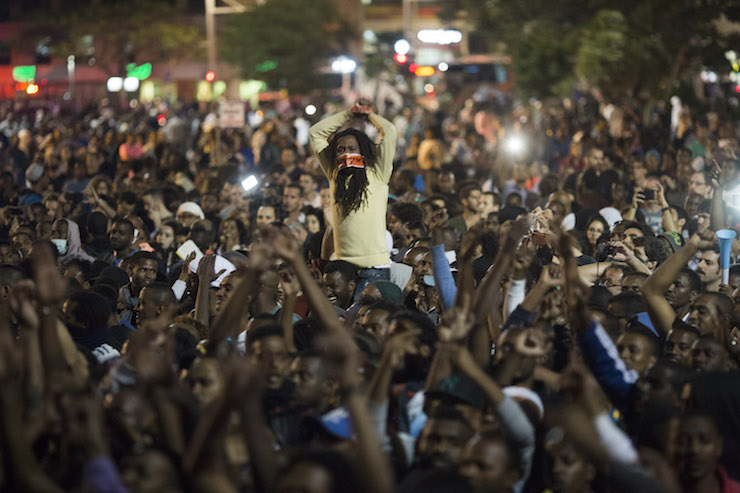
The police killing of 24-year-old Ethiopian-Israeli Yehuda Biadga last month sparked outrage among the Ethiopian community in Israel. Many believe that were it not for the color of his skin, he would still be alive today. Biadga, who suffered from PTSD as a result of his army service, was shot while wandering around his neighborhood in the city of Bat Yam while holding a knife. Instead of using a taser or firing warning shots, the officer shot Biadga in the head.
Local Call, +972 Magazine’s Hebrew-language sister site, examined all deadly police shootings in the past five years (the full list is below). An analysis of data, provided by the Justice Ministry’s Police Internal Investigations Department (PIID) shows that almost all suspects killed by police in that time period were people of color. Since 2014, police killed 14 people inside the Green Line in incidents not categorized as nationalistically-motivated or terrorism related. Nine were Palestinian citizens of Israel, three had Mizrahi last names, one of Russian origin, and one Ethiopian.
According to the Police Internal Investigations Department, it has not filed a single indictment against officers involved in any of those deadly shootings. In two of the cases, the PIID did not even open an investigation, while in 10 incidents the department closed the cases without an indictment. Only two of the cases are still open — one of them is Biadga’s.
More broadly, the chances of a complaint against a police officer resulting in an indictment are very low. A report by the State Comptroller from 2017 found that of the approximately 6,300 complaints of violence that reached PIID in 2015, only around 200 (3.2 percent) officers were prosecuted.
The PIID said that in all of the cases where officers killed suspects, it determined the officers acted legally in self-defense. While every police killing automatically leads to a PIID investigation, injury cases are usually opened after the victim submits a formal complaint.
“The police’s culture of violence and lies in the occupied territories trickles into Israel and affects Arabs first and foremost, but it also affects Ethiopians, Russians, and Mizrahim,” says Jafar Farah, the executive director of Mossawa Center, a Haifa-based NGO that promotes the economic, social, cultural and political rights of Israel’s Palestinian citizens. “This is a fact. There are no cases of police officers killing Ashkenazim.”
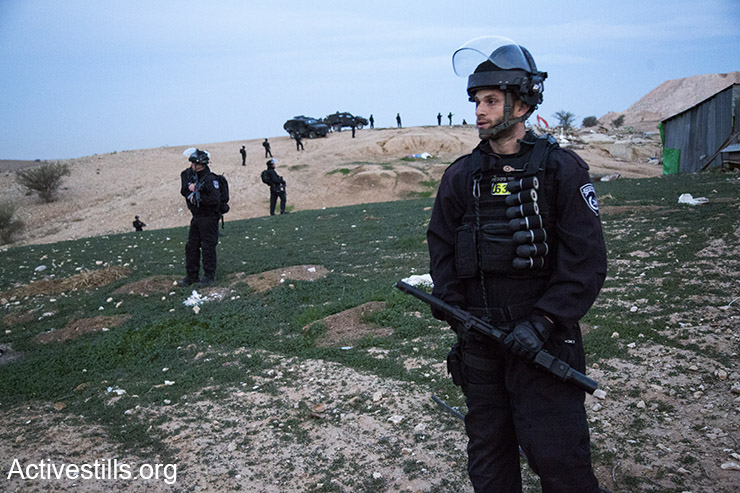
Farah is not optimistic about the results of PIID’s investigation into Biadga’s death. “The police officers continue with this routine because the system strings the families of the victims along,” says Farah. “We are witnessing a backslide in PIID’s professionalism. It is part of a trend. How can it be that PIID did not come to the scene of the incident in Bat Yam to collect evidence?”
Farah mentions the case of Mahdi Sa’adi, who was shot and killed by police in Jaffa in 2017, as an example of unprofessional handling of evidence. “The police gathered video footage from the scene alongside PIID, ostensibly to investigate protests by the local residents,” Farah claims. “What actually happened was that the police got rid of the evidence.”
“They wear you out,” Farah says about PIID. “A family who loses its breadwinner, who cannot get a criminal lawyer, finds itself alone.” In some cases, families are denied access to autopsy findings. According to Mossawa, police have killed 38 Palestinian citizens of Israel since 2000.
The following is a summary of each of the cases of the 14 people killed by Israeli police in the past five years, excluding cases in the occupied territories and those classified as nationalistic or terrorism related, and what happened with the PIID investigation.
Kheir Hamdan, 22 years old. Kafr Kana. November 8, 2014.
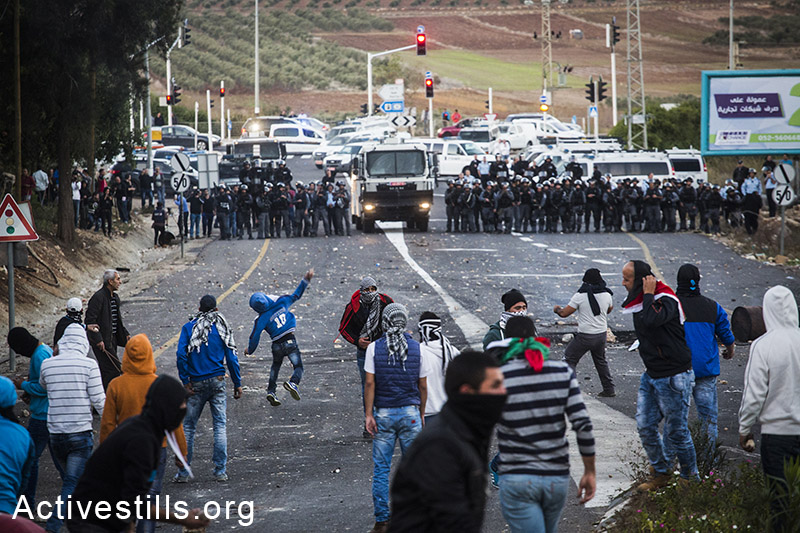
During a police raid on Kafr Kana, Hamdan came out of his house and approached a group of riot police sitting in a police vehicle. Hamdan was holding a knife and began hitting the windshield of the car while the officers were inside. As they stepped out of the car, Hamdan began running away. Although he no longer posed a danger to them, the policemen shot him in the back.
PIID closed the case, and issued the following comment: “PIID closed the case due to the absence of a criminal act. The issue is currently under review as part of a petition to the High Court of Justice.”
Sami al-Ja’ar. 22 years old. Rahat. January 14, 2015.
Sami al-Ja’ar was shot by police officers during a night raid on a drug depot in Rahat’s Neighborhood. Al-Ja’ar, who had no connection to the raid, came out of his house upon hearing a noise and was shot to death by an officer a few yards from his doorway. PIID closed the case.
PIID: “After examining the evidence and obtaining references from relevant authorities, the attorney general, having consulted with the state attorney, reached the conclusion that the evidence does not sufficiently support charging the officer.” Khaled al-Ja’ar, Sami’s father, petitioned the High Court of Justice, demanding that the officer be relieved of his position. The petition is still pending.
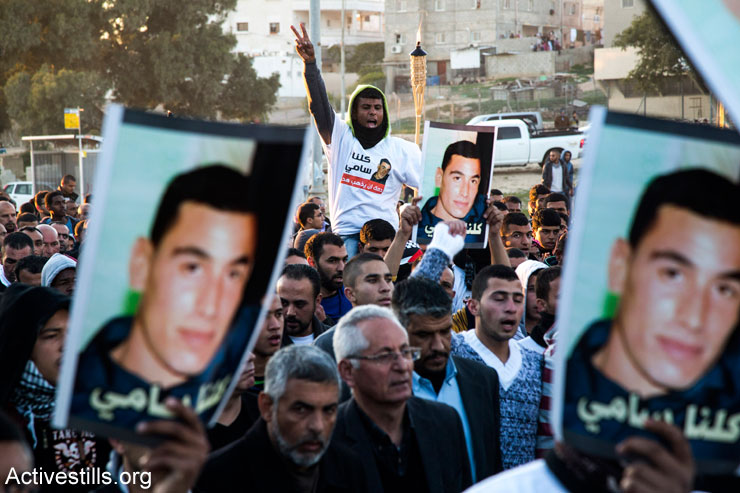
This event resulted in another casualty: during Sami al-Jaar’s funeral, confrontations erupted between mourners and the police. The police used tear gas, killing Sami Zaidana, another resident of Rahat. PIID declined to investigate Zaidana’s death. The family was later notified that an autopsy revealed Zaidana “had died as a result of cardiac event.”
Omer Ashkenazi, 29 years old. Ashdod. February 27, 2015.
Ashkenazi was identified by policemen while planting an explosive device next to a home as part of an ongoing conflict between organized crime syndicates. He was not armed. He noticed the police officer and tried to flee, first by car and then on foot. During the pursuit, he was shot in the head by police and died of his wounds a week later. PIID decided not to investigate the incident, until Ashkenazi’s family went to court over the matter. The decision was overturned and PIID proceeded to investigate the officer who shot Ashkenazi. The case was shelved due to insufficient evidence.
PIID: “After a comprehensive inquiry and having obtained the versions of all the officers involved in the event, it was concluded that the shooting did not meet the standard of a criminal act as defined by criminal law, and the case was transferred for further action to the relevant authorities inside Israel Police.”
Ayad Abdullah. 38 years old. Ein Nakuba. April 22, 2015.
Abdullah was shot to death by police while he was seated next to a driver who was being pursued. An officer suspected that the vehicle was involved in an earlier robbery attempt at a nearby gas station. The officer shot Abdullah through the window of a police car after the driver refused to stop and attempted to flee. The officer claimed that the two had tried to run over the officers. PIID closed the case and the attorney general rejected an appeal of the decision.
PIID: “An examination of the evidence reveals that the officers identified the vehicle in which the deceased was riding as having participated in a robbery attempt shortly before. The policeman asked the driver to stop, but he drove away in a manner that posed a threat. The driver did not stop after shots were fired in the air and despite attempts to stop him, including another police vehicle that attempted to block his path. This led the officer to the conclusion that the riders of the car had to be apprehended, as they constituted a clear danger. In this situation, the shooting was consistent with the police’s open-fire regulations, and there was no basis for suspecting the officer of committing a criminal act. The file was transferred to the relevant authorities to examine the officer’s professional conduct.”
Shahar Maman. 34 years old. Bat Yam. October 17.
Police were summoned to the location after receiving a report of an altercation and a man holding two kitchen knives. One of the officers yelled at Maman to drop the knives; when Maman approached him, the officer shot him, claiming his life was in danger. Maman’s family members said the recent shooting of Yehuda Biagda had reignited their anger toward the police. “They just draw a gun and shoot,” his mother told Israeli news site Ynet. PIID did not investigate Maman’s death.
PIID: “The shooting officer received a report of an altercation. When he arrived on the scene he noticed a wounded man. When he tried to interrogate him, the deceased ran toward them brandishing two knives in his hands, shouting something and not heeding calls to stop. When [Maman] approached the police officer and the wounded man, the officer fired a single shot at him to neutralize him. Upon examining the circumstances of the event, we decided that the shooting did not raise the suspicion of a criminal act, and therefore PIID decided not to open an investigation.”
Mazen Abu Habak. 18 years old. Rahat area. February 2, 2016.
Police officers and volunteers noticed a suspicious vehicle close to the town of Eshbol in the northern Negev. According to police, the driver did not obey the calls to stop and a pursuit ensued, during which the passengers of the jeep collided with a police car. A police officer fired at the vehicle, which managed to flee. Only an hour after the incident, Mazen Abu Habak, from the village of Masudin al-Azazma, was brought to a clinic in Rahat with bullet wounds in his back. He was evacuated to Soroka Medical Center in Be’er Sheva in critical condition and died of his wounds four days later.
Contrary to customary conduct in similar cases, the police did not report the incident to the media, Israeli paramedics did not report evacuating a person with gunshot wounds, and Soroka Medical Center did not report admitting him. Only nine months later did Haaretz publish a story on the incident. The police volunteer who shot Mazen Abu Habak was interrogated under caution a year after the event, under suspicion of negligent homicide. According to PIID, the investigation did not find sufficient evidence to press charges. The department closed the investigation.
Sand Hajj Yihya. 27 years old. Taybe. February 27, 2016.
Hajj Yihia was shot by officers who tried to arrest him after he was suspected of stabbing his wife and another man. Police claimed that he resisted arrest and stabbed an officer before being shot, although neighbors said police shot him twice while he was laying on the ground after being beaten by the officers, after he no longer posed a danger. PIID closed the case.
PIID: “It was decided that the policeman acted lawfully when shooting the stabber.”
Jibril Jaroushi, 18 years old. South Tel Aviv, July 27 2016.
Jaroushi, a resident of Ramla, was shot by police in south Tel Aviv as part of an operation against local drug dealers. The officers, who encountered four young men, claimed that Jaroushi aimed a gun at them. Jaroushi’s family claimed he was running away and was shot in the back. PIID closed its investigation.
PIID: “According to the evidence, the deceased drew a gun and pointed it at the officers and was then shot. Lethal force was justified under these circumstances, when there was clear and present danger to the officers’ lives. It is clear that under the circumstances, it was not possible to fire warning shots in the air. In light of this, and despite the tragic and regrettable outcome, it seems that the officer acted lawfully.”
Yacoub Abu Alqian, 45 years old. Umm al-Hiran, January 18, 2017.
Abu Alqian was shot as Israeli security forces carried out demolitions in his village. He was driving around the village in his car during the early hours of the morning. Police opened fire at the car, hitting him. The car then deviated from its path and ran over Officer Erez Levy, who died as a result. Abu Alqian bled to death in his car and did not receive medical help. At first, police argued this was a terrorist attack, a claim that was debunked after a lengthy public campaign. Despite this, PIID closed its investigation.
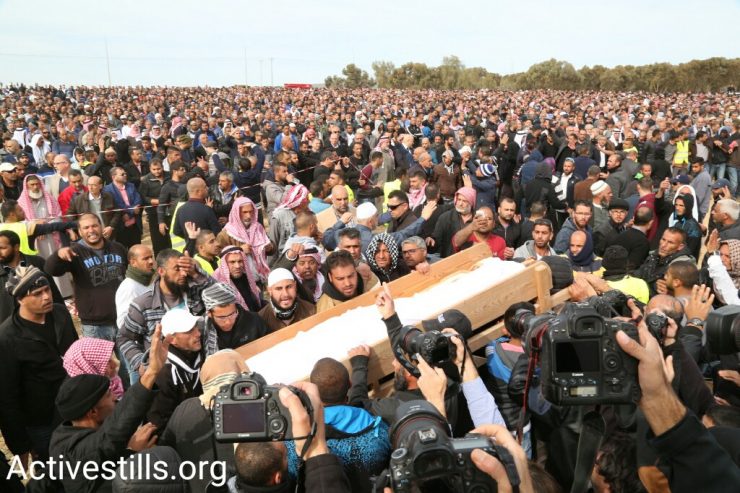
PIID: “After examining the material and the findings of the PIID investigation, the state attorney concluded that there is no reasonable suspicion of criminal acts on the part of the officer involved. The decision indicated, among other things, that the actions of the police, which allegedly stemmed from the sense of mortal danger… does not constitute a violation of reasonable behavior as it pertains to the legal justification of the use of arms.”
“The state attorney relayed a number of issues to the police commissioner and the head of the police’s disciplinary body, to examine the command and disciplinary aspects of the incident, which have no bearing on the evidence in the file. The state attorney suggested investigating whether the police units had been properly prepared for the complex mission; whether there were professional faults in the conduct of the shooting officers; whether there were professional issues in the medical treatment of the deceased; certain changes and inconsistencies in the versions of the officers involved, etc.”
Haim Ben Shimon. 38 years old. Tirat HaCarmel. May 21, 2017.
Ben Shimon was involved in a dispute with the owner of a tire store, who complained to police about not being paid by Ben Shimon for goods he had bought. Two officers arrived at the scene. According to their version, Ben Shimon stabbed them with a knife and one of the officers was forced to shoot him. One officer was moderately wounded and the other lightly wounded.
Neighbors who witnessed the incident claimed Ben Shimon suffered from mental health problems. PIID closed its investigation.
Sergey Hanukayev. 31 years old. Zichron Ya’akov. August 23, 2017.
The police claimed that Hanukayev arrived at a shopping center in Zichron Ya’akov, entered a branch of Discount Bank, threatened a woman with a knife, and demanded one of the tellers hand over all the money she had. He took a total of NIS 4,000 and ran home. When the police arrived at his house, Hanukayev allegedly threatened them with a knife and the officers shot him several times. He died of his wounds soon thereafter. PIID closed its investigation.
PIID reported: “First the deceased came out of his house with a knife and approached the officers. At this stage tear gas was used to prevent him from endangering the officers. Later on, the deceased came out of his house again brandishing a knife, aiming it at the head of one of the officers. In this situation, when the officers perceived their lives were in danger, and after taking a number of precautions to avoid opening fire, the shooting of the deceased was in self-defense, and there is no basis to suspect the officer committed a crime.”
Mohammad Taha, 28 years old. Kafr Qassem, June 6, 2017.
Taha was shot by a security guard employed by a private company to guard the entrance to a police station in Kafr Qassem. On the same day, the police arrested a resident of Kafr Qassem over his membership in a civilian guard established by local volunteers, which police objected to. During the evening, residents assembled in front of the police station to protest the arrest. A confrontation ensued, during which the security guard shot and killed Taha. The police argued the shooter was a private security guard and not an officer. No PIID inquiry was opened.
PIID: “This was a shooting committed by a civilian security guard and is therefore not within PIID’s jurisdiction.”
Mahdi Sa’adi, 20 years old. Jaffa. July 2017.
Police claimed that Mahdi “was known to the police” and was shot during a pursuit as he was riding on a motorcycle with a friend. Police suspected that he had been involved in a shooting at a store in Jaffa around half an hour earlier. The officers claimed that they felt their lives were in danger; Mahdi was shot in the back, as was the driver of the motorcycle, who continued driving for a few hundred feet after the shooting until he realized that Mahdi had collapsed. A PIID investigation is ongoing.
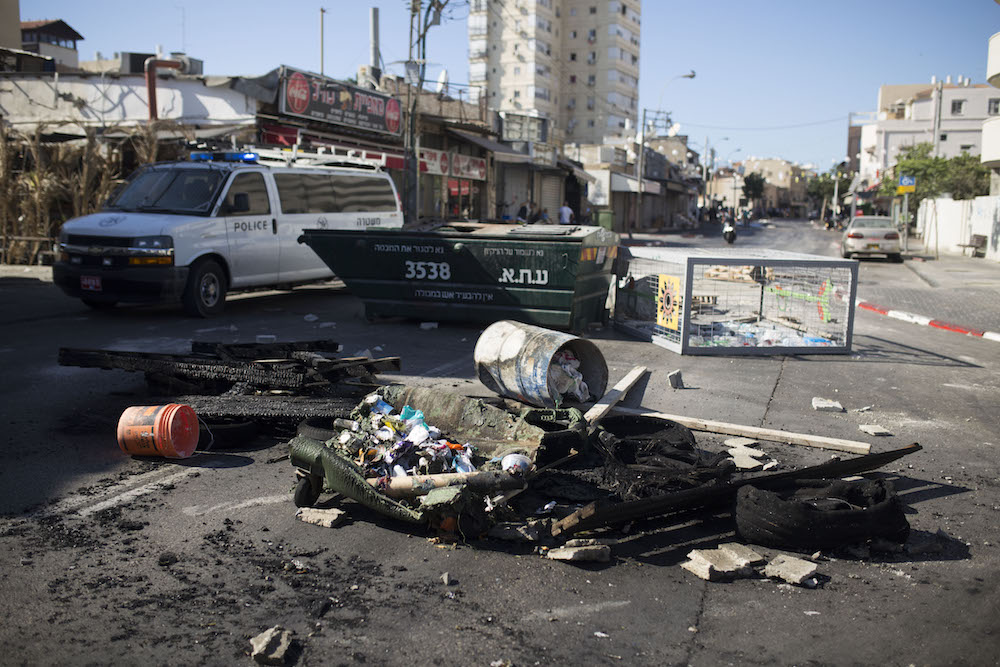
PIID: “The case is under examination by PIID’s legal team in preparation for a resolution.”
Yehuda Biadga, 24 years old. Bat Yam, January 18, 2019.
PIID opened an investigation following the incident.
PIID: “The case is under examination by PIID’s legal team in preparation for a resolution.”
* * *
The following is the full response of the Justice Ministry’s Police Internal Investigations Department:
The purpose of the Police Internal Investigations Department is to serve as a ‘gatekeeper,’ to assist in limiting the use of force, to ensure ethical behavior, and to uncover criminal activity on the part of the police. Police officers are sent every day to perform complex and sensitive tasks that often involve putting their lives in danger, which sometimes becomes reality. A police officer has in his toolkit, among other things, the authority to use reasonable force in order to perform his duty, including lethal force in certain cases. Every day officers confront a multitude of tasks involving high friction with civilians. In no small part of these cases, some sort of force is used, as dictated by the circumstances, sometimes involving errors of judgment but not rising to the level of a crime.
In these cases, the role of PIID is to carry out a professional and measured triage: on the one hand, to investigate crimes by policemen, especially those directed against weak populations that are subject to excessive policing, actions characterized by unnecessary police violence, abuse of authority, and even real acts of cruelty. On the other hand, it is the obligation of PIID to avoid labeling an officer as a criminal suspect just because he or she used force while on duty. It is a delicate balance, and the investigators and lawyers of PIID are experts in dealing with it.
The events presented to PIID required maintaining the fine and delicate balance between obeying the law and the vital interest to defend human life, versus the need to enable the police fighters to protect the population from hostile elements without fear of censure. It has to be recognized that a police officer who is confronted with a terrorist attack or a life-threatening situation exercises judgment and makes decisions, usually within a few seconds, and in the midst of an emotional emergency situation fraught with danger. Indeed, most of these events resulted in findings which invalidate the suspicion of criminality, according to the rules pertaining to self-defense customary in legal proceedings.
A version of this article was first published in Hebrew on Local Call. Read it here.

